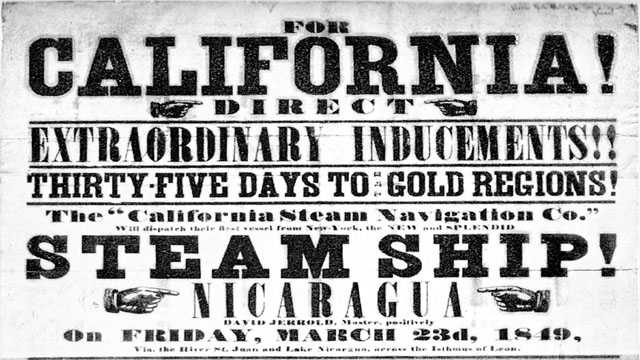Background
The California Gold Rush (1848–1855) began on January 24, 1848, when gold was found by James W. Marshall at Sutter’s Mill in Coloma, California. All told, the news of gold brought some 300,000 people to California from the rest of the United States and abroad. Of the 300,000, approximately half arrived by sea, and half came overland from the east, on the California Trail and the Gila River trail.
The gold-seekers, called “forty-niners” (as a reference to 1849), traveled by sailing ship and covered wagon and often faced substantial hardships on the trip. While most of the newly arrived were Americans, the Gold Rush attracted tens of thousands from Latin America, Europe, Australia, and Asia. At first, loose gold and gold nuggets could be picked up off the ground. Later, gold was recovered from streams and riverbeds using simple techniques, such as panning. More sophisticated methods were developed and later adopted elsewhere. At its peak, technological advances reached a point where significant financing was required, and mining companies became important. Gold worth tens of billions of today’s dollars was recovered, which led to great wealth for a few. However, many returned home with only a little more than what they had originally started with.
The effects of the Gold Rush were substantial. San Francisco grew from a small settlement of about 200 residents in 1846 to a boom town of about 36,000 by 1852. Roads and other towns were built throughout California. In 1849 a state constitution was written, and a governor and legislature were chosen. California became a state as part of the Compromise of 1850.
Read his book below



